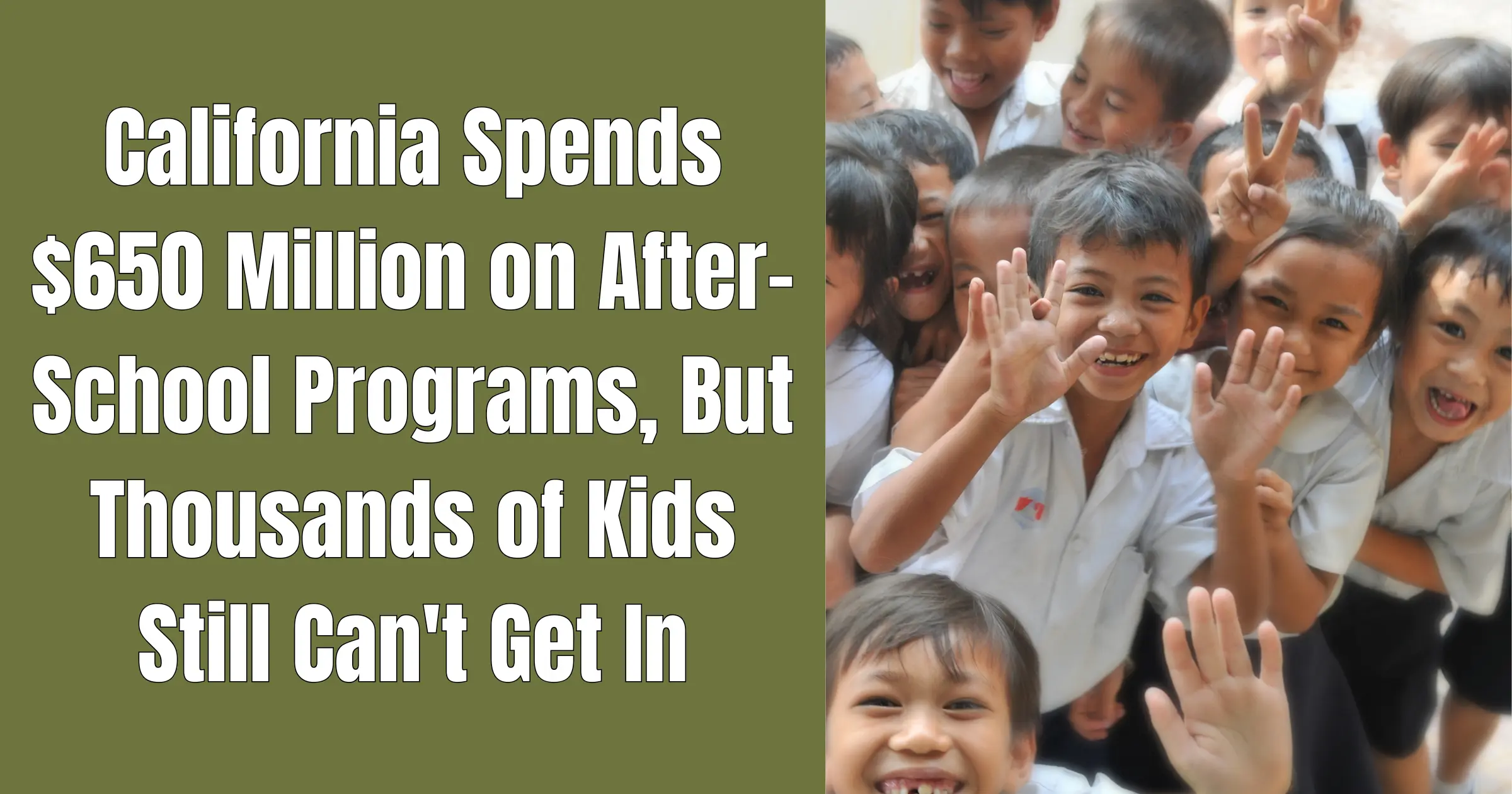Picture this: every school day at 3 PM, thousands of California kids walk up to after-school programs only to be told there’s no space for them. It’s happening across the state, even though California spends more money on these programs than any other state in America – over $650 million each year.
You’d think that kind of investment would be enough, right? Unfortunately, the reality is much more complicated.
California has built what looks like a solid support system for students who need extra help. There are three main programs: the Expanded Learning Opportunities Program (ELO-P), After School Education and Safety (ASES), and the federally funded 21st Century Community Learning Centers. Add to that hundreds of nonprofit organizations running their own programs, and it seems like there should be plenty of spots for everyone.
But here’s where things get messy. These programs don’t talk to each other. They’re like three different companies trying to solve the same problem without sharing notes. ELO-P serves kids in kindergarten through sixth grade, ASES covers kindergarten through ninth grade, and 21st Century programs handle all grade levels. They have similar goals and often serve the exact same students, but they operate completely separately.
This fragmentation creates real problems. Some areas get multiple programs while others get none. Planning happens in isolation, funding streams overlap, and nobody has a clear picture of what’s actually working. Even the nonprofits running their own successful programs get left out of the coordination efforts.
The numbers tell the story. A 2024 survey found that 53% of California’s expanded learning programs have waiting lists. That means more than half of these programs are turning kids away every day, not because the kids don’t want to participate, but simply because there isn’t room.
Staff shortages make the problem worse. These after-school jobs typically pay between $11 and $18 per hour – less than what someone can make working at Target or McDonald’s. As one program director put it, finding and keeping good staff who can truly connect with students remains a constant challenge. Without enough workers, programs have to limit enrollment to maintain the required 1-to-20 staff-to-student ratio.
California is finally trying to get a handle on the data problem. Starting in 2025-26, a new system called CALPADS will track enrollment and attendance across the three main programs. But it still won’t include the nonprofit programs, and it won’t measure important things like how much students are actually learning or improving.
The solutions aren’t necessarily complicated, but they require coordination. California needs to streamline these overlapping programs into one unified system. The state should expand its data tracking to include all programs, not just the government-run ones. And instead of just throwing more money at staff wages, California could explore creative solutions like building a volunteer corps of college students and community members.
The bottom line is simple: California has the funding and the infrastructure to make expanded learning work for every student who needs it. What’s missing is the coordination to make it happen efficiently.

